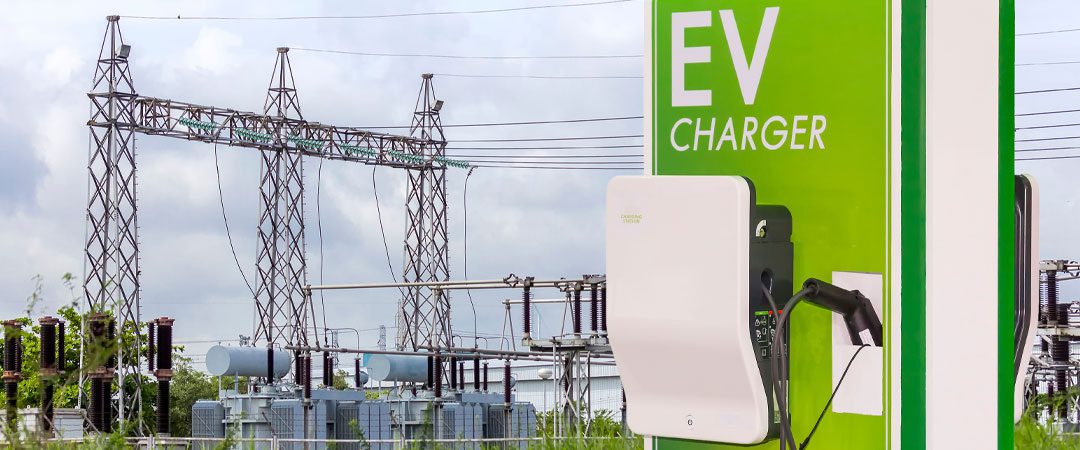December 12, 2022
By Kristen Murphy, Market Director – Utility, and Lex Silbernagel, Special Projects Manager – Utility

Globally, demand is softening as recession looms in China and Europe, which is taking pressures off price inflation for raw materials, such as copper and aluminum. However, the supply issues and demand pressures aren’t letting up for utilities, especially for transformers and electric vehicle (EV) charging stations.
Why utility demand is strong: Shifts in population, renewable energy initiatives and electric transportation are causing utilities across the country to accelerate the rate of build for critical infrastructure projects. Storms and wildfires continue to add unpredictable pressures to the already strained supply chain. Additionally, the availability of labor, core steel and other sub-components are compounding these pressures by preventing manufacturers from operating at full capacity.
Transformers
While transformer manufacturers continue to make gains in the production process, demand is still outpacing them. Many of these manufacturers are producing 20%–30% more product than pre-COVID-19 levels; however, increasing production even further is being hindered by labor constraints and gaps in supply for subcomponents.
- Only one domestic manufacturer remains for electric steel in the United States, and transformers use grain-oriented electrical steel. EVs use non-grain-oriented electrical steel, which competes for production of grain-oriented steel.
- Fabrication of oil-filled transformer tanks requires skilled welders, which is a major group represented in the labor shortage.
Without major changes in supply or demand, supply of transformers will remain a challenge, and projects may be impacted. We believe a higher-level solution is necessary to address the supply and demand imbalances as we transition to electric transportation. Understanding federal recommendations and impacts to the supply chain will help in appropriately planning for necessary investments.
What’s being done: President Biden invoked the Defense Production Act in June to help address the need for domestic manufacturing for transformers and electric power grid components. However, manufacturers say this action is unlikely to reduce their backlog:
- The portion of the act that’s being applied would create funding for domestic clean energy technology, but it doesn’t directly increase transformer production.
- Requiring suppliers of raw materials and subcomponents to prioritize transformer manufacturers would help stabilize supply chain delays, but it remains unclear whether this will come to fruition.
In the meantime, the CEO-led Electricity Subsector Coordinating Council (ESCC) is recommending strategies to the federal government to help remediate supply of transformers and the potential risks to critical infrastructure. Recommendations from the ESCC to the Department of Energy are expected to be submitted by Saturday, December 31. Funding from the Inflation Reduction Act may be part of the solution.
EV chargers
Production and deployment of EV chargers are being impacted by the supply of analog power electronics, like rectifiers. Demand for minerals and metals for the green generation, storage and charging is also a mid- to long-term challenge that is expected to impact supply and slow the green transition.
The transformer supply issues mentioned above are also impacting the transition to EVs, as more transformers and larger kVA transformers are needed to support efficient EV charging.
- The National Electric Vehicle Infrastructure (NEVI) Program’s minimum requirements for funding a DC fast charging (DCFC) station are four simultaneous 150 kW DCFC ports (600 kVA total).
- However, NEVI is encouraging utilities to plan for future upgrades equating to 350 kW per port (1,400 kVA total).
Smart charging schedules will be an important element for limiting disruption to the grid and reducing costs and overloading of equipment. To make this happen, close coordination between utilities, public officials, end users and charging-station owners is critical. Smart charging factors in information, such as charge status, charge rate and so on, to allow for the distribution of charging across a longer time frame.
Key takeaway: EVs are being purchased faster than charging infrastructure is being built, with only 11,600 fast charging stations supporting more than two million EVs on the roads in the United States today. The usage of smart chargers is key to transitioning to healthy charging infrastructure and the successful, mass adoption of EVs.
Stay informed
In most other industries around the globe, demand is softening due to uncertainty and high inflation; however, the rate of change necessary to secure America’s electric grid with sustainable, integrated renewables continues to outweigh the ability to procure critical components — particularly materials required for transformers and EV charging infrastructure.
Check back with us regularly to stay informed about the fluctuating supply chain, so you can plan your projects accordingly.
Read more
Aluminum: Three Interesting Trends to Watch
Why Isn’t the Price of Wire Following the Price of Copper?
Disclaimer
Our information is compiled from several sources that, to the best of our knowledge and belief, are accurate and correct. Border States accepts no liability or responsibility for the information published herein. These materials are provided for informational use only and do not, nor are they intended to, constitute legal advice.
The links contained in this article are provided for your convenience only. While we try to include only links to or frames of those sites which are in good taste and safe, we are not responsible for the content of third-party sites and cannot guarantee that sites will not change without our knowledge, and inclusion of such links and frames in this article does not imply Border States’ endorsement of the linked or framed sites or their content. If you decide to access any of the third-party websites linked to in this article, you do so entirely at your own risk and subject to the terms and conditions of use for such websites.